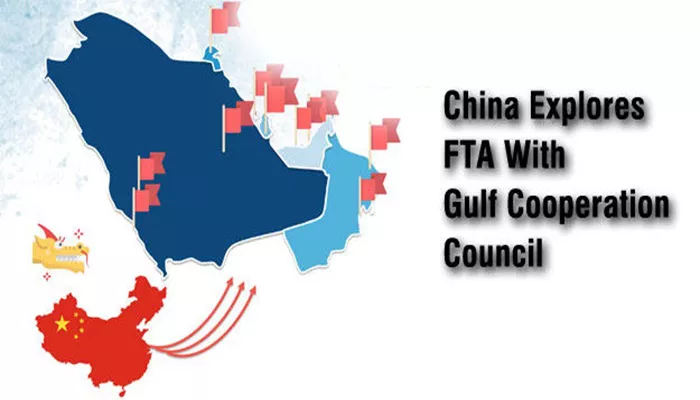In an era where global summits have devolved into arenas for ideological showdowns, the Association of Southeast Asian Nations (ASEAN) stands out as one of the rare platforms. Here, major powers from the East and West, as well as the North and South, can convene without pretense. ASEAN eschews preaching and the blind formation of alliances, instead prioritizing dialogue as the cornerstone of its approach.
As major powers increasingly draw battle lines across the globe, a crucial question emerges: Where can the Gulf Cooperation Council (GCC) and China look to safeguard their interests, maintain stability, and foster economic growth? The answer frequently points to ASEAN.
Strategic Significance of ASEAN for the GCC and China
The preference shown by the GCC and China for ASEAN is neither happenstance nor mere symbolism; it holds profound strategic importance. ASEAN offers elements that are scarce in today’s international system: a neutral regional stance, a dedication to strategic pragmatism, and vast economic potential.
In a world where global summits have become stages for ideological battles, ASEAN remains a haven. Its approach of non – interference and consensus – based diplomacy creates a threat – free environment. It is inclusive, refraining from imposing its will on others. Instead of coercion, it relies on meetings to drive progress, making it an ideal diplomatic framework for the Gulf monarchies and China – an open, non – judgmental, and effective platform.
The GCC, rich in energy resources, and China, with its infrastructure prowess, are connected by ASEAN. For Gulf countries, ASEAN represents a key market for oil, gas, and petrochemical investments. Nations like Malaysia, Indonesia, and Thailand offer stable demand and a burgeoning downstream industry. Additionally, Gulf region sovereign wealth funds view ASEAN as a means of diversifying their portfolios, hedging against the volatility of the oil market.
China, on the other hand, sees ASEAN as a vital component of the Maritime Silk Road. Chinese ports, railways, and fiber optic cables traverse ASEAN territories, extending to South Asia, Africa, and beyond. Countries such as Laos, Malaysia, and Indonesia have already integrated into China’s “Belt and Road Initiative” construction.
Geographical, Cultural, and Diplomatic Advantages
The GCC and China both recognize the indispensable geographical centrality of ASEAN. Situated at the crossroads of the Indian and Pacific Oceans, ASEAN is not just a transit zone but a strategic pivot.
For Gulf countries, ASEAN has unique cultural and diplomatic appeal. It is home to Indonesia, the world’s most populous Muslim nation, and has vibrant Muslim communities in Malaysia, Brunei, southern Thailand, and the Philippines. This makes ASEAN a natural partner for the GCC in Islamic diplomacy and economic endeavors. The Gulf countries do not consider ASEAN as a competitor in the Islamic world; rather, they see it as a collaborator in shaping a moderate and modern image for Islam. Initiatives in Islamic banking, halal certification, and education have progressed smoothly between the two sides.
China places great emphasis on cultural diplomacy and views ASEAN as a region with cultural compatibility rather than conflict. The China – ASEAN relationship is less burdened by historical grievances compared to China’s relations with India or Japan. Instead, it is firmly grounded in common interests.
Aligning Positions on Global Governance
When it comes to seeking alternatives to the existing global governance structure, the GCC and China are increasingly in alignment. Both are growing more cautious of Western – dominated institutions such as the International Monetary Fund and the World Bank.
This is evident in ASEAN – led platforms like the East Asia Summit, the ASEAN Plus Three (10 + 3) forum, and the Regional Comprehensive Economic Partnership Agreement. Here, the agendas are set in Asian capitals like Jakarta, Kuala Lumpur, and Hanoi, not in Brussels or Washington.
ASEAN has demonstrated that a non – Western cooperative model, based on mutual respect, functional pragmatism, and common prosperity, is viable. In a world marked by zero – sum confrontations and the erosion of multilateralism, ASEAN remains a strategic anomaly.
The GCC and China regard each other as pragmatic partners, a connecting link, and an alternative to existing norms. ASEAN’s strength does not lie in traditional power; rather, it lies in its agility. It may not be the most vocal participant, but it commands widespread attention. For the GCC and China, the focus is not on dominance but on achieving common development and facilitating civilizational dialogue. In this triangular relationship of trade, trust, and transformation, ASEAN occupies the pivotal intersection.
This article was published by the Malaysian Mail Online news website on May 24th. The author is Professor Pan Jinming from the International Islamic University of Malaysia.
Related topics:

